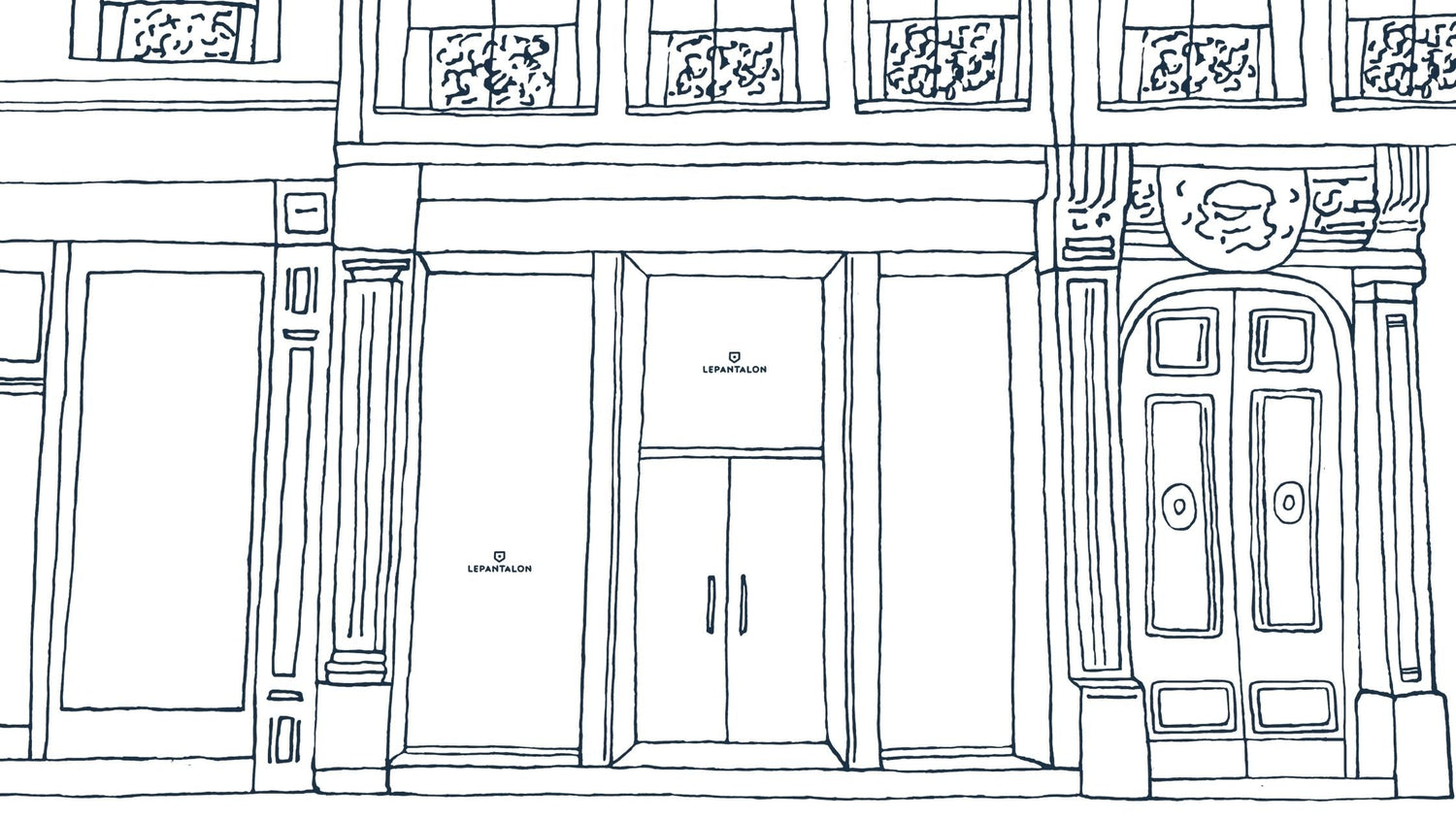An integral part of our lives (or at least our wardrobes) for over two centuries, jeans were originally made to withstand the harsh working conditions of factory workers and miners in the United States. Over time, they have established themselves in our wardrobes and become an icon of American, even Western, culture. Today, they come in all shapes and sizes and are worn by all ages. Once a symbol of rebellion, they are now not only universal but also a purely fashionable product.
We will look back at the origins and evolution of this blue icon.
The creation of jeans
“Jeans” is short for “blue jeans” invented by Jacob Davis and Levi Strauss in 1873.
The word "Jeans" itself comes from the city of Genoa, Italy, where the textile called "jean" or "jeane" (cotton and linen canvas), very similar to corduroy, was produced in the 19th century. At that time, the Republic of Genoa was known as an exporter of this textile, which was sought after throughout Europe.
Envious of the success of the Genoese, the weavers of Nîmes tried at the time to copy the "jeans" of Genoa but were unable to do so. It was therefore by accident that they gave birth to the textile known as "denim canvas": "Nîmes twill canvas"!
Serge de Nîmes was originally a textile made of wool and silk. The famous blue color of the warp thread comes from a dye called "blu di genoa" (Genoa blue), which is where the name "blue jeans" comes from. This color was obtained naturally, thanks, among other things, to the indigo plant.  (Indigo Flower)
(Indigo Flower)
The Riveted Jeans
In 1851, Levi Strauss left Germany for New York to join his brother, who ran a family business. He later moved from New York to San Francisco to open a West Coast branch of the family business: Levi Strauss & Co. It was the time of the Gold Rush, and miners needed clothing durable enough to withstand their harsh working conditions.
Jacob Davis, a tailor from Reno, Nevada, was trying to create pants that could withstand these conditions, using denim fabrics straight from the Levi Strauss & Co. wholesale store. He faced a significant problem, however: the pockets of the garments he produced tore too easily. He then came up with the idea of reinforcing the pocket corners with metal rivets.
Recognizing the success of his riveted pants, Davis quickly tried to patent his idea to protect it but didn't have enough money to do so. So, in 1872, he approached Levi Strauss about partnering with him to jointly file the patent. The riveted jean was born.
 (Jeans with rivets)
(Jeans with rivets)
Made from durable materials designed to last, jeans were originally worn as workwear, particularly by American laborers, farmers, and miners.
 (Miners wearing jeans)
(Miners wearing jeans)
During World War II, a large proportion of the factory population began wearing jeans. Once the war was over, the wearing of jeans was supposed to disappear, and good morals would reappear. Luckily for us, this didn't go exactly as planned...
The evolution of the symbol
Following World War II, in the United States, wearing jeans became a symbol of rebellion, a refusal to reintegrate into conventional society and therefore a rejection of social norms. This was the beginning of the Beat Generation, with artists such as Jack Kerouac and Allen Ginsberg choosing to wear denim with an anti-fashion, anti-establishment aim.
In the 1950s, jeans as we know them today became a symbol of rebellion throughout Hollywood. This was called "clothing change." Actors such as James Dean and Marlon Brando popularized them in films such as "Rebel Without a Cause" and "The Wild One." They wore Levi's 501s and Lee Rider's 101s. Jeans were then used to assert themselves; they became dangerous, rebellious, and even sexual objects.
 (James Dean in "Giant")
(James Dean in "Giant")
One person made jeans so popular that the rebellious image of jeans quickly became mainstream. Elvis Presley, in the musical film Jailhouse Rock (1957), dressed entirely in denim to play the role of a prisoner. His famous dance moves caused a sensation, and soon, every young person in the country wanted to be like him.
 (Elvis in "Jailhouse Rock")
(Elvis in "Jailhouse Rock")
Unfortunately, in a still very puritanical America, wearing jeans was quickly banned in schools, theaters and restaurants.
Jeans, however, would become popular again in the 1960s and 1970s as a fashion item. They would be worn by men, women, and children of all social classes. Widely worn by hippies (often in bell-bottoms), who would excessively personalize them with beads and cotton flowers, they would also become a symbol of the Peace & Love movement.
In the 70s and 80s, it was mainly the punk and heavy metal movements with bands such as the Sex Pistols that popularized jeans. Denim became torn, faded, almost mistreated. The 80s marked the beginning of worn jeans. This look was achieved by washing with pumice stone or sandblasting (a very controversial technique because it is dangerous for humans).
 (The Sex Pistols)
(The Sex Pistols)
The 90s were marked on the one hand by the controversial Calvin Klein advertisements.
(Brooke Shields or even Kate Moss and Mark Wahlberg) and on the other hand by the explosion of very "fashion" brands such as Diesel, Miss Sixty or even Pepe Jeans.
The 2000s saw the birth of the "total denim look" fashion, not always in better taste, as well as faded zebra-striped jeans.
 (Justin Timberlake and Britney Spears in 2001)
(Justin Timberlake and Britney Spears in 2001)
Today, jeans are a unisex, basic item that can be worn anywhere, anytime. They accompany us throughout our lives, whether at work or at home.
It has lost a lot of its symbolism but remains very sexualized in advertising as we can see with brands such as Guess or Diesel.
 (Gigi Hadid for Guess)
(Gigi Hadid for Guess)
It is found in both the mass market and luxury.
Jeans are now a must-have in men's wardrobes, just like chinos .
But then, LePantalon has to make a pair of jeans, right?! 😉


